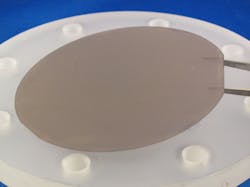Cree’s GaN Technology Serves LTE Base Stations
The gallium nitride (GaN) power-transistor technology developed by Cree, Inc. has helped RFHIC Corp. supply amplifiers for fourth-generation Long Term Evolution (LTE) cellular-communications base stations and other wireless communications systems that meet some demanding efficiency and linearity requirements. Cree licensed RFHIC Corp. about a year-and-a-half ago to provide that amplifier supplier with ready access to Cree’s pioneering Doherty amplifier-related patents. At the time, Cree’s Director of RF, Jim Milligan, noted that “From our early work in maximizing the efficiency of silicon LDMOS amplifiers to our current initiatives using GaN-based devices, Cree has successfully developed innovative circuits that enhance the performance of the classic Doherty architecture.” As much as 15% improvement in efficiency was gained with GaN in these amplifiers than compared to a conventional Doherty amplifier implemented with silicon LDMOS devices.
About the Author
Jack Browne
Technical Contributor
Jack Browne, Technical Contributor, has worked in technical publishing for over 30 years. He managed the content and production of three technical journals while at the American Institute of Physics, including Medical Physics and the Journal of Vacuum Science & Technology. He has been a Publisher and Editor for Penton Media, started the firm’s Wireless Symposium & Exhibition trade show in 1993, and currently serves as Technical Contributor for that company's Microwaves & RF magazine. Browne, who holds a BS in Mathematics from City College of New York and BA degrees in English and Philosophy from Fordham University, is a member of the IEEE.
